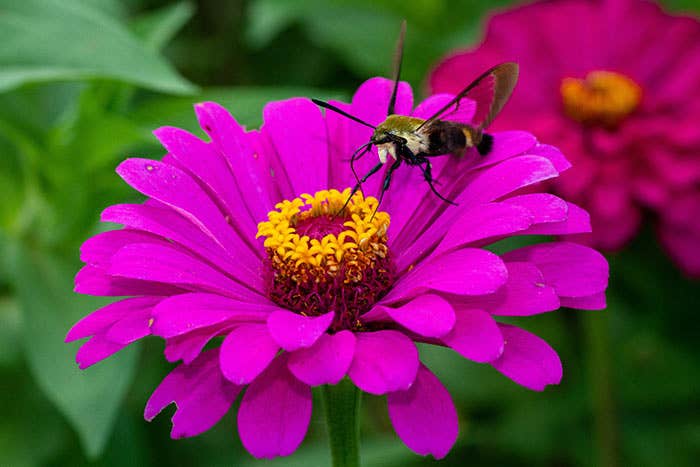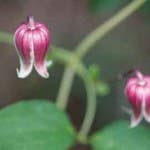BY JENKS FARMER / Columbia, South Carolina, Zone 8
EVERYONE in my neighborhood (and yours, too, I'll bet) has a lawn. Unfortunately, most of them are the same—unimaginative and crew-cut, not at all like the fun, giant Swiss-cake-like rolls of sod they once were. Lawn grasses have so much more potential for gardening creativity than the way most gardeners use them.
For instance, I use the warm-season lawn grass ‘Emerald’ zoysia as shag carpet. In other words, I don't mow my lawn. Uncut, it grows to about eight inches, and by late summer, my carpet looks super shaggy. Different grains of the grass crash like waves, some lying over others, but for the most part the densely packed blades stand up straight and soft. In the summer, ‘Emerald’ is a beautiful color. It has a very narrow leaf blade, and, unlike some zoysia cultivars, it doesn't run too vigorously into beds or over walkways. In the winter, when it's khaki brown, the waves and grains seem to freeze in place.
Other than the fact that it's shag, my lawn is like anyone else's. It's great to lie on, to walk on, or to play ball on. Like the neighbors’, my zoysia yard supports lawn chairs, a pot of pansies, some dog poop, and a few lost plastic Easter eggs. I'm not the only person around who doesn't mow—one of my neighbors made knee-high hills in her front yard and covered them with a shag carpet of zoysia—but it doesn't look like I'm starting a trend, either. In other parts of the world, though, not mowing is standard. In the Caribbean, unmown swaths of a small-growing zoysia grace both chicken yards and tropical villas, as I discovered on my vacation to Santo Domingo.
One thing to remember when setting out to grow your own colony of shag is that an unmown carpet requires different care from a regular lawn. Maintenance on a shag lawn is needed mostly in the winter. In summer, excess water and fertilizer only make the grass grow too much, which makes the carpet a bit messy. In the winter, I take a hard rake to the lawn to comb out some of the dead grass. Just as spring growth starts, I either burn what is left on the ground or cut it with a mower raised up high.
To complete the relaxed look, I never edge my lawn-carpet—it has those tasselly kind of edges that just weave together with the garden. Sedum grows far from the beds, intertwining with the zoysia, as do hens-and-chicks and spider plants. In fact, zoysia makes a great safe home for tiny bulbs that may otherwise go missing. Rain lilies, tiny clusiana tulips, and spider lilies can be lost, visually and literally, in a garden, where they are more likely to receive too much water and are subject to being overshadowed by larger plants. The competition from zoysia roots keeps them dry and ensures that nothing too tall covers them. Sometimes even bigger plants move into the carpet. Last year, a long-lost voodoo lily (Amorphophallus sp.) appeared. Three leopard-skinned, fist-size, sheathed buds emerged in April, and three giant leaves stood all summer, in dramatic contrast to the fine hair of the zoysia.
To do in the garden
- Soil is warm enough now to direct-sow basil, cosmos, zinnas, castor beans, and other tropical annuals. Keep seedlings moist. Sow toward the end of June to ensure late-summer color.
- For optimum growth, especially if you're aiming for the tropical look, water and fertilize regularly. Annuals such as Senna alata, pentas, tropical salvias, and perennials such as alocasias, cannas, and Persian shield grow as much as you fertilize.
- In early May, prune and divide aggressive spring-flowering shrubs. Virginia sweetspire, clethra, and kerria should all be root-pruned now to keep them from overtaking their neighboring plants. With a sharp spade, cut the clump back to desired spread. Plant will recover, set buds, and flower well next spring.
Worth growing
Coral bean
Erythrina herbacea
In high school, we called this color “go-to-bed red.” In late spring, waist-high spikes of red, red, red emerge, followed by wickedly prickled eight-foot-long branches that should be cut back throughout the summer. Incredibly drought tolerant, coral bean will thrive without a drop of extra water. In the dead of winter, three-inch-long black pods split open and coral-colored beans spill out. Hardy in USDA Zones 7-10.




